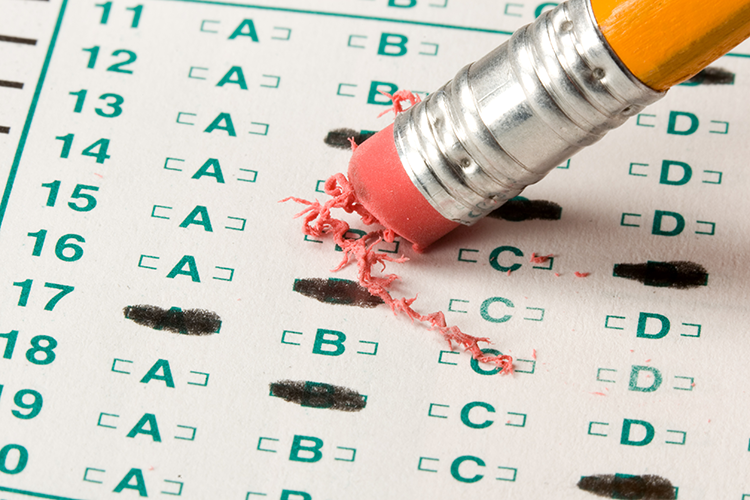The Public Service Loan Forgiveness program is a case study of ABA advocacy

Image from Shutterstock.
Two decades ago, critical government and public service positions, including legal positions, were going unfilled or experiencing high turnover nationwide. Prosecutors, defense attorneys, teachers, health providers and other public service workers were in short supply.
Congress responded in 2007 by establishing the Public Service Loan Forgiveness program, which created an economic incentive for professionals willing to make a long-term commitment to public sector careers. The program authorizes the forgiveness of any remaining student loan debt for individuals who have made at least 120 on-time monthly payments while working full time in government or at an eligible nonprofit organization doing public service work.
The ABA started advocating for the creation of PSLF in 2002, and our steadfast support continues today. The program provides a financial tool to support government and nonprofit service providers who help ensure the delivery of vital services to the public, regardless of how rural or underresourced a community is. It is also a recruitment and retention tool that helps reduce student loan debt obligations for eligible professions, including public service lawyers.
Legal labyrinth
For many, though, Department of Education regulations implementing the program have been confusing, and retaining eligibility through 10 years of public service has proved difficult. In fact, this lack of clear guidance resulted in denied applications for most people. The borrowers who began making their PSLF-eligible payments in October 2007, the earliest date permitted under the act, first became eligible for loan forgiveness in October 2017. Unfortunately, when they applied, 99% of them were rejected.
An April 2021 Department of Education report showed little improvement in that percentage—just 2% of the applications processed had been approved. Most applications were rejected due to misunderstandings over what constituted qualifying payments. Many applicants who made timely payments over the required 10-year period were notified of their ineligibility because they were in the wrong repayment plan or unknowingly had followed erroneous advice regarding compliance with other aspects of the program for years after starting their public service.
To help, Congress authorized the Temporary Expanded Public Service Loan Forgiveness program in 2018 and appropriated $700 million so that many of these borrowers might still benefit. In October 2021, the Department of Education announced several other actions to help simplify the eligibility rules and strengthen the PSLF program, including a “time-limited waiver so student borrowers can count payments from all federal loan programs or repayment plans toward forgiveness.”
There also have been direct attacks on PSLF’s existence. Between 2014 and 2020, Congress and successive administrations sought to drastically cut PSLF benefits or to eliminate the program completely. The ABA, working with our members and allies, successfully helped defeat each attempt.
Untangling red tape
Today, amid the COVID-19 pandemic, the Biden administration and Congress have been working to improve student debt relief and reform PSLF’s confusing regulations—efforts actively supported by the ABA.
In April 2020, the CARES Act administratively suspended student loan payments in the PSLF program while still giving borrowers credit for each suspended payment as a qualifying payment as long as they otherwise met the program’s requirements. Additionally, no interest accrued during the suspension period. In August, the Biden administration extended that relief through Jan. 31.
Suspending student loan payments and providing a temporary waiver period to credit more borrowers with qualifying payments are welcome actions, but they are also just temporary. More permanent relief is needed, and the ABA is working tirelessly to make that happen. Letters to agency and elected officials, meetings with congressional leaders, and even a Student Debt Week of Action are just some of the ways the ABA and its members have been working toward a more lasting solution.
Using digital tools on the ABA’s website, participants in our Student Debt Week of Action sent over 1,600 digital letters to members of Congress urging student debt relief and PSLF improvements. Working with the Coalition to Preserve PSLF, our members also contributed to the more than 45,000 responses sent to the Department of Education by its September deadline for public input on the PSLF program.
When the Department of Education proposes long-term improvements to PSLF after analyzing this input, the ABA will work hard to ensure the final process is transparent and accessible to all who qualify for relief.
Leading the effort to enact the PSLF program 14 years ago was important, but our work is not done. The ABA will continue to seek ways to strengthen the program so that communities across the country have access to the critical legal services they need, where and when they need them. To learn more, visit ambar.org/Debt4Giveness.
This story was originally published in the December 2021/January 2022 issue of the ABA Journal under the headline: “Fight for Forgiveness: Public Service Loan Forgiveness program is a case study of ABA advocacy.”
This report is written by the ABA's Governmental Affairs Office and discusses advocacy efforts by the ABA.



